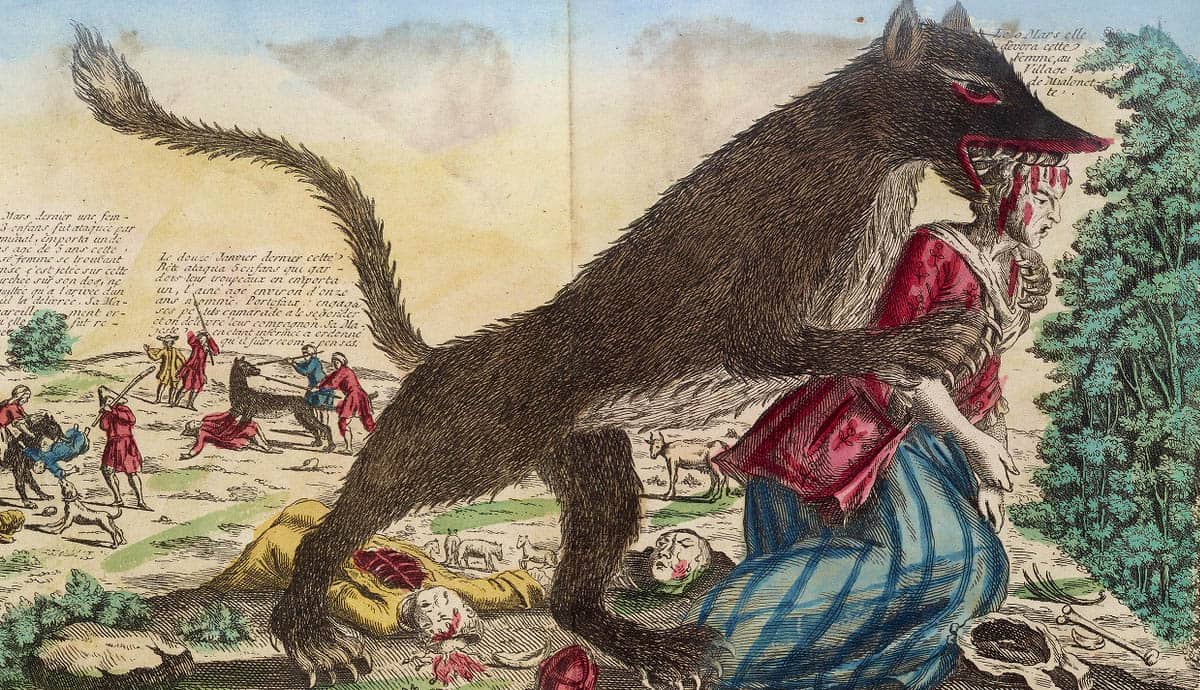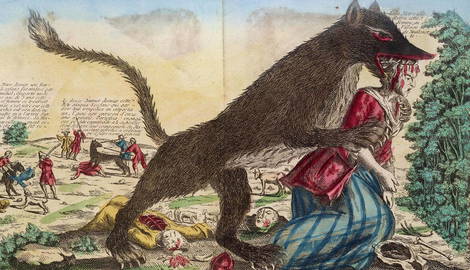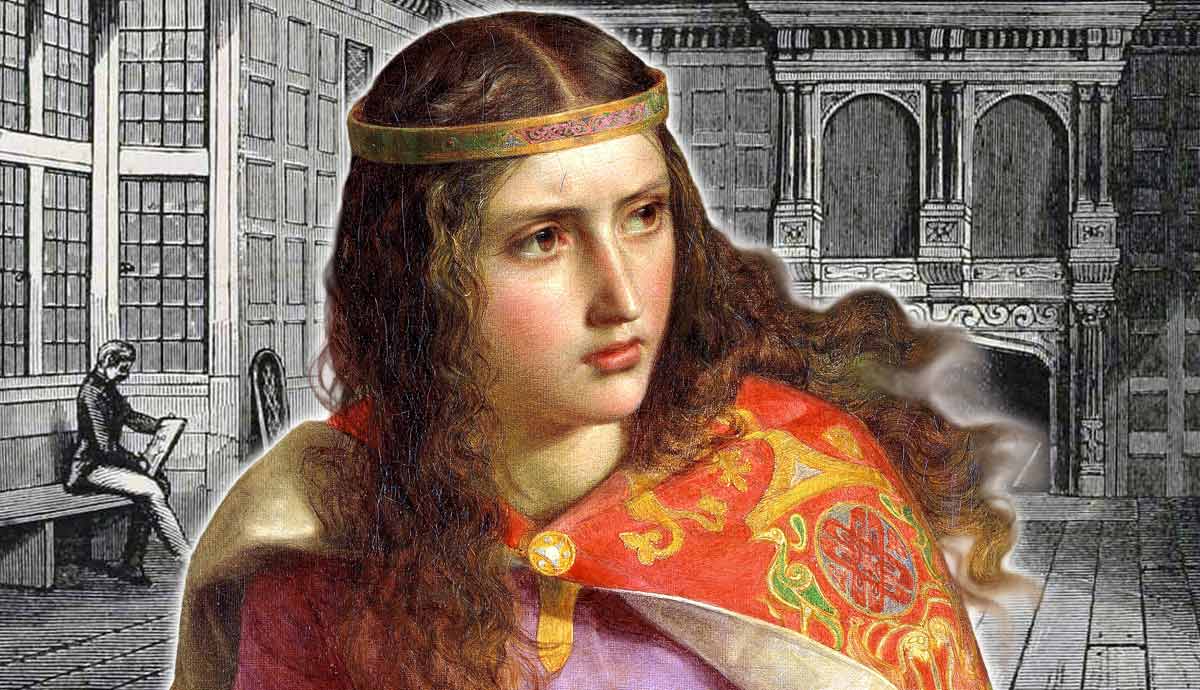
In 18th-century France, the mysterious beast of Gevaudan terrorized the population of a rural region. The unsolved mystery of the beast’s true nature never ceases to fascinate, even today.
In 1764, the soon-to-be-famous animal claimed its first victim; a woman attacked near Langogne in the South of France. This incident could have become just another story about a ferocious deadly beast. Instead, the story spread, and even Louis XV, king of France, got involved.
Several hundred people, mainly women, and young girls were injured or killed over three long years. Hunters from all over the country and beyond came to capture or kill the beast. Yet, not even the most skilled and well-equipped soldiers of the kingdom could stop the deadly attacks.
Newspapers at the time recounted every new twist in the story that kept the whole population on edge. Almost a hundred articles were published, contributing to the spread of the story of the Beast of Gevaudan, even beyond France’s borders.
The attacks did stop eventually, but only after a thousand days of terror.
The Beast of Gevaudan’s First Victims

The county of Gevaudan is an ancient historical region in the center of Southern France, today in the Department of Lozère. This isolated region is made up of rocky landscapes and vast woods, its population living in an austere environment.
On June 30, 1764, Jeanne Boulet, a young girl of fourteen years old, was attacked near her village and killed by a beast. Her death was reported in the parish registers of Saint-Etienne-de-Lugdarès in the Ardèche Department, and marked the first of a long list of people killed by the ferocious beast.
From the beginning, these attacks terrorized the population by their barbarity. The victims were not simply killed by an animal for food. The monster lacerated their bodies with such violence that it could not simply come from a feeding instinct but from a desire to inflict pain. During the following months, the animal attacked more and more victims. It progressively migrated to the West and established itself in the old Gevaudan region.
A Beast Impossible to Identify

The main records of these attacks were the parish registers, where births and deaths were recorded, sometimes specifying the cause of death. These registers mention a “Bête,” the French word for “beast.” In popular tradition, as soon as a wild animal started killing humans, it became a “bestia” in Latin — a monster.
Based on the reports made at the time by witnesses or survivors, the Beast of Gevaudan was always more or less described as a kind of wolf, but a singular one. Wolves were common in the region and killed cattle or sheep from time to time. Yet, peasants knew them well and knew ways to scare them off. But things were different with the beast.
The creature had red fur, a black stripe along its back, and a long tail. Following the descriptions, its eyes were reddish and evil, and it could walk on its back legs like a human. The sounds coming from the creature resembled no others. The animal was fast; it could run up to 25 miles in a single day.
In some illustrations of the beast, a word repeatedly appeared: hyena. Some conflated the animal with an exotic monster known to come from Africa. Hyenas had a bad reputation for being cunning animals far more dangerous than wolves. However, this theory seems very unlikely to be true, as a hyena could not have survived the cold weather.
A Monster Killing Women and Young Girls

The beast’s victims were often left partly eaten or dismembered. Sometimes missing limbs or heads were found several dozen yards away from the body — a real horror scene for the witnesses.
Most of the victims were illiterate peasants living in a harsh environment, far from the king and his court. The beast chose his victims and mainly attacked women or young girls. People became afraid of going out of their homes or sending their children to the fields. No one dared to go out at night, and villagers added bars to their windows and locks to their doors in the hope of keeping the monster out.
For Gabriel-Florent de Choiseul-Beaupré, bishop of Mende, the most eminent religious authority in Gevaudan, God sent the beast to punish men for their sins. Choiseul-Beaupré published a pastoral letter explaining that the lack of religious education and loose morals, especially among girls and women, attracted God’s fury. He compared the Beast of Gevaudan with other vengeful animals in the Christian tradition, such as snakes or lions.
The bishop used the fear provoked by the beast to serve his own intentions to straighten the peasants up. He urged the population to pray for redemption. Choiseul-Beaupré enhanced the terror, which resulted in the resurrection of old beliefs among the population, such as tales of witches and werewolves.
The Beginning of a Hunt Involving the Entire Nation

A few months after the first attacks, first captain Duhamel of the Clermont Prince dragoons, (troops of the king’s mounted infantry), and his men took on the mission to stop the beast’s carnage. With the help of villagers equipped with weapons, they searched through the woods to find the animal. However, they never succeeded and drove the beast further North.
As the beast seemed only to attack girls or women, captain Duhamel and his men dressed up in dresses to trick the beast. Still, they could not fool him. Twenty to thirty-thousand men were enrolled to hunt the beast down. Yet, he always escaped. After seven months of hunting and no success, captain Duhamel and his dragoons eventually left the region.
Louis XV’s Intervention

After the end of the Seven Years’ War between France and Great Britain, France had lost several of its colonies. Louis XV, King of France, became highly unpopular among his people and his authority was put to the test.
La Gazette de France, the first weekly newspaper published in France, created under the reign of Louis XIII, was looking for new exciting stories to tell. The story of the Beast of Gevaudan conveniently arrived after the war was over. La Gazette de France spread the news of a beast eating women and children, especially young girls, in Gevaudan and contributed to its growing fame across the kingdom. A hundred articles were published in one year, revealing the importance of the story.
When the public heard the story of a mysterious beast killing the population of one of the kingdom’s most remote regions, they were immediately interested to find out more about it. They soon asked questions about the beast’s identity: was it a wolf, a dog, or some kind of monster? News of the Beast of Gevaudan spread throughout the country and eventually reached the king’s ears. Louis XV, a cultivated man, was highly intrigued by the nature of this beast. As science boomed, men tried to classify every natural and living element into categories.

Along with articles, engravers produced prints of what the beast supposedly looked like; a monstrous furry animal with sharp, deadly teeth. La Gazette and other journals circulated the beast’s image far beyond the country’s borders. Along with it came an unflattering portrait of Louis XV and the affair soon became political. The Beast of Gevaudan exemplified France’s weaknesses. From Great Britain to Boston in North America, people made fun of the French king and his armies, incapable of capturing or killing a single animal, evidence of France’s weakness.

Louis XV had to respond. His first act was to reward a young boy’s bravery. Jacques Portefaix, a teenager, was with six other children in the woods when the beast attacked and took one of them. Instead of running away, he directed the others to rescue the young boy from the beast’s teeth. The children succeeded, and they all survived.
The king’s next action was to put a price on the beast’s head: around ten thousand pounds, something that had never been heard of before! Hunters came from all over the country and beyond to try to kill the beast and receive the prize. Wolf hunting was an important discipline at the time, as they represented a threat to the sheep and cattle. Professional wolf hunters followed a set of rules established since the 16th century. Dogs helped them in their work, and hunters had to bring back the wolf’s head to receive a prize. Against strong and speedy animals, only the best hunters succeeded.
Who Could Finally Kill the Beast?

As no one seemed able to kill the Beast of Gevaudan, the king got involved. Louis XV was himself a skilled hunter. Another highly skilled hunter was among his closest friends: François Antoine, the king’s arquebus bearer. Louis XV personally charged him to go to Gevaudan and hunt the beast down. Failing was not an option as the king’s reputation was involved.
During the rainy summer months of 1765, François Antoine hunted the beast through the woods without much success. At the same time, the beast attacked a woman that would soon be known as the “Virgin of Gevaudan”. On August 11, Marie-Jeanne Vallet, a young woman of twenty years old, and her sister were attacked by the beast while crossing a bridge over a stream. Marie-Jeanne managed to fight back, sticking a spear into the beast’s chest. Still, the beast escaped again. After a period of four weeks, the attacks resumed.
With the winter coming, François Antoine became increasingly worried about failing his mission. Around mid-September, he and his men went to the woods surrounding the Abbaye de Chazes. They hunted and killed a colossal gray wolf, immediately acknowledged as the Beast of Gevaudan. Even Marie-Jeanne and her sister recognized the animal as their attacker. François Antoine became the hero who killed the famous Beast of Gevaudan.

Yet, was it really the same animal? The wolf was enormous, but no human remains or bones were found in its stomach. Also, it was found in a region far away from previous attacks and villages. Despite these unanswered questions, the wolf of Chazes was immediately and irrevocably recognized as the Beast of Gevaudan. Its body was sent to Versailles to be stuffed and presented to the king. François Antoine, not sure if it was the beast, stayed the following weeks in Gevaudan, and no more attacks were reported.
Was the Beast of Gevaudan Really Dead?

A few weeks later, in December 1765, a new victim was found dead, a young shepherdess of eleven. Nevertheless, for Louis XV, the case was closed. The king had just lost his only son, Louis, Dauphin of France, and the attacks in Gevaudan were the least of his worries. Even the newspapers stopped recounting the attacks of the Beast of Gevaudan.
In Gevaudan, the population could only count on itself to hunt and finally kill the beast for good. During the following months, the attacks intensified, and it was only during the summer of 1767 that Jean Chastel, a young farmer, delivered Gevaudan’s population from the beast’s terror.
On June 19, 1767, after another beast attack, several men, including Jean Chastel, followed the animal in the woods. Jean came face to face with the animal, shot and killed it. After that day, no more attacks from the Beast of Gevaudan were reported. The story of its death was told and magnified more than a hundred years later by the abbot Pourcher. He told the story of Jean Chastel, a faithful man, the only one able to kill an evil monster.

After the beast’s death, a doctor did an autopsy, and the corpse of the beast was brought to Paris, in hot sunny weather. Georges-Louis Leclerc, Comte de Buffon, the naturalist and famous author of the Histoire Naturelle, barely examined the rotten corpse of the beast. It was finally buried in an unknown location, preventing scientists and future generations from studying and unveiling the mystery surrounding the beast of Gevaudan’s true nature.
The king never acknowledged Jean Chastel as the beast’s killer, yet history remembers him as the story’s true hero. The story of the Beast of Gevaudan fascinated people for centuries, and many of them came up with their own theories. Some say that it was not a beast but a man, terrorizing the countryside. This theory is improbable as no one who had seen it up close ever reported a man wearing a wolf’s skin. Its true nature still perplexes historians and zoologists today. Maybe it was not one but several wolves attacking the population.
Based on the reports of the time and the highly detailed notes taken during the beast’s autopsy, experts cannot know for sure the beast’s true nature. Was it a dog, a wolf, or a hybrid between both? The mystery remains, contributing to the myth surrounding the Beast of Gevaudan.










